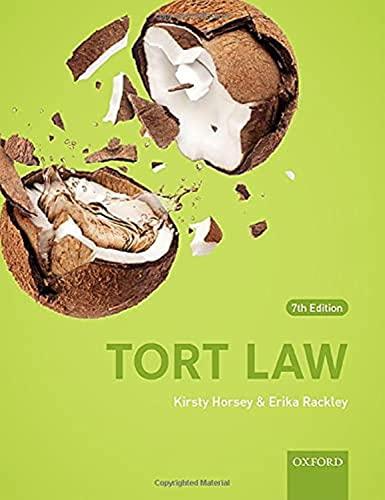Question
Help please. The first response to the multitude of practically identical transactions was the standardization of contracts. Printed standard contracts or forms laid down those
Help please.
The first response to the multitude of practically identical transactions was the standardization of contracts. Printed standard contracts or forms laid down those provisions that are essential in the eyes of the drafting party. It depended upon the relative economic strength of the other party whether departures from the printed form could be negotiated. Trade associations as well as individual enterprises developed and elaborated forms and standard contracts for their members. The same technique of standardization was adopted for international transactions. The forms and standard contracts of certain well-known trade associations, especiallyBritishones, such as the London Corn Trade Association, were used by exporters and importers in many countries. The same was true of many shipping transactions. Even international bodies, such as the United Nations Economic Commission for Europe, elaborated printed forms for certain international contracts. Apart from standardizing thecontractpractices of a particular party, these uniform conditions also helped to bridge the gap between the many different national rules. They were a means of achieving partial uniformity oflawforinternational trade. The development of uniform legislative rules for international transactions was another distinctive feature in the 20th century. This trend resulted from the uncertainties to which international commercial transactions that came under two or more national jurisdictions were exposed. International conventions resulted in the unification of numerous rules, especially in the areas of transportation, industrial property (patents and trademarks), copyright, and commercial paper (bills ofexchangeand checks). Less successful so far have been attempts in the fields of sale of goods and the conclusion of contracts. Despite considerable progress in the field of unification, none of the uniform rules is really worldwide in scope, many being limited to a continent or to narrower regional groups such as the countries of theEuropean Unionor theSouthern African Development Community. The sale is the most common commercial transaction. All the rights that the seller has in a specific object are transferred to the buyer in return for the latter's paying the purchase price to the seller. The objects that may thus be transferred may be movable or immovable andtangibleor intangible. (Patents are an example of intangibles.) Not all transfers of goods to another person for any purpose whatsoeverconstitutea sale. Goods may be transferred for use only (lease), for safekeeping or storage (bailment), as a present (gift), or in exchange for another good (barter). They may also be transferred assecurity. A sale is involved only if the seller intends to part with the object completely and conceivably forever and to receive instead a sum ofmoneyas the price.
1.Universally, _______ refers to a currency applied in reservation of transactions on which indices to be transformed are centered on _______.
2.Justify or falsify
Broadcasting of the currency is executed by the sort feature of the scope.
3.Given many-_________ currency alterations, the fulcrum currency and _________currency is identical.Describe the concealed identity.
4.Falsify or justify.
Contacts are reserved within the fact counter within the pivot currency for one-to-many transformation.
5.Determine the count of discrete sorts of currency conversion supported by the Business Intelligence Wizard.
6.Establish the maximum count of people in private company.
7.Fundamentally, criminal law is?
8. Determine the sorts of agreements contemporary in a contract which is recognized as void.
9.Within which segment of the PF Act is the phrase"Appropriate Government" defined?
10.In which section is the phrase contribution defined in?
11.Who is an adult basing on the Factories Act, 1948?
Step by Step Solution
There are 3 Steps involved in it
Step: 1

Get Instant Access to Expert-Tailored Solutions
See step-by-step solutions with expert insights and AI powered tools for academic success
Step: 2

Step: 3

Ace Your Homework with AI
Get the answers you need in no time with our AI-driven, step-by-step assistance
Get Started


